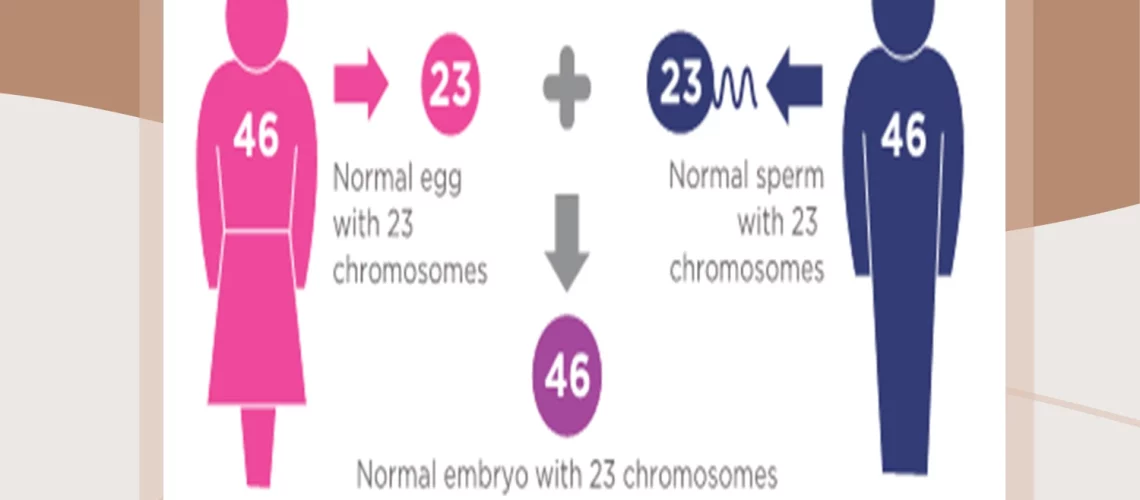Euploidia e aneuploidia
È molto importante ricevere embrioni di buona qualità durante le tecnologie di riproduzione artificiale, in quanto è la chiave per un trattamento di successo. Ma cosa significa effettivamente “buona qualità”? Si tratta della valutazione microscopica degli embrioni da parte di un embriologo? Andiamo ai fondamenti di questa domanda.
Durante il processo di fecondazione, due cellule di entrambi i genitori si fonderanno, uno spermatozoo di un padre e un ovocita di una madre. Ciascuna di queste cellule immagazzina la metà del normale numero di cromosomi e i cromosomi sono i portatori del materiale genetico in tutte le cellule del corpo umano. Ma quando avviene la fecondazione, i loro genomi, ciascuno di 23 cromosomi (22 autosomi e un cromosoma sessuale), formeranno il genoma di un futuro embrione.
In condizioni normali, in questo processo l'embrione si formerà con 46 cromosomi: 44 autosomi, che sono uguali in entrambi i sessi, e due cromosomi sessuali: XX per le ragazze XY per i ragazzi. Questo stato è chiamato "euploidia" e significa la normale quantità di cromosomi.
A volte, a seconda delle situazioni individuali dei genitori, i loro gameti possono contenere la quantità sbagliata di cromosomi. La causa può essere sia legata all'età che associata a condizioni mediche come problemi ereditari, ambiente dannoso (radiazioni ionizzanti, alcuni farmaci).
Ciò comporterà la formazione dell'embrione che avrà il numero sbagliato di cromosomi (meno di 46 o più di 46). Questo chiamato "aneuploidia" e può portare a problemi di salute in un bambino. Inoltre, tali embrioni possono essere morfologicamente normali, quindi, durante la microscopia, l'embriologo non vedrà alcuna anomalia. Lo stato genetico degli embrioni non porterà necessariamente ad alcuni cambiamenti del loro aspetto.
Come stimare lo stato genetico degli embrioni?
Se un medico deciderà che i genitori sono nel gruppo a rischio, gli verrà proposto il test genetico preimpianto. Significa che i loro embrioni verranno sottoposti a biopsia, una piccola parte di essi (5-10 cellule) verrà portata al laboratorio genetico e, dopo l'indagine, il medico riceverà: quali embrioni sono aneuploidi e quali sono pubblici, quindi potrebbero essere consigliato per un trasferimento. Per le migliori possibilità di gravidanza, l'embrione morfologicamente più qualitativo e, allo stesso tempo, l'embrione euploide sarà scelto per un trasferimento.
L'aneuploidia porterà sicuramente a malattie in un bambino?
Bene, con esso questi problemi non sono garantiti. Secondo il Diagnosi genetica preimpianto Raccomandazioni della Società Internazionale, esiste un elenco di "priorità" per il trasferimento di embrioni aneuploidi nel caso in cui non vi siano opzioni euploidi. Questa priorità parte da aneuploidie specifiche che porteranno meno probabilmente ai problemi di salute, tuttavia, saranno necessarie indagini più dettagliate sulla gravidanza per stimare tutti i rischi per la salute con ultrasuoni e screening biochimici. Tuttavia, sarà stimato dal medico e Pons Medical Research troverà specialisti appropriati per la consultazione in caso di tale necessità.

